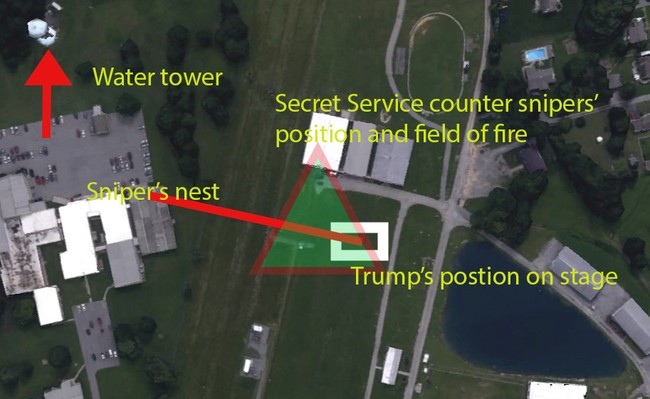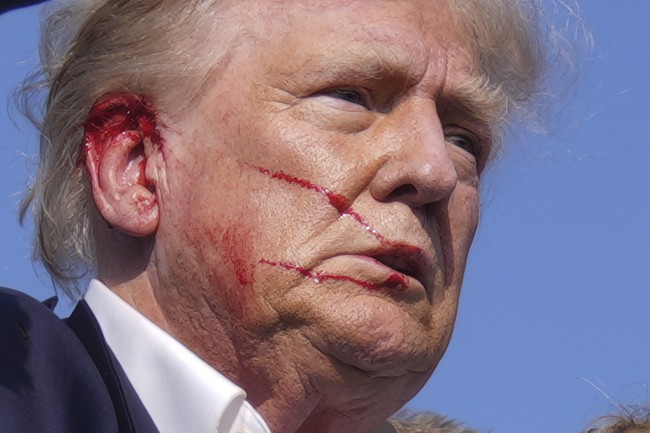
The retired Army general officer who led Kurdish Peshmerga guerilla troops in Iraq and who now serves as a senior staffer for a Florida congressman told RedState, as a military man, the Secret Service must look at what went wrong before the July 13 assassination attempt on President Donald J. Trump.
“They’ve got to do an absolutely serious after-action review, not just for their sake, not just for the sake of any future presidents, but the sake of this country,” said Brig. Gen. Ernest C. Audino, who was commissioned as a second lieutenant upon his graduation from the U.S. Military Academy at West Point, N.Y.
“They got to figure out where the failures occurred, and it’s got to be an honest after-action or review—no thin skins—and if you fouled up, own up to it because there were failures along the way,” said the general, who is a senior military fellow at the Washington-based Gold Institute for International Strategies.
“My hypothesis is somebody failed to appreciate the militarily significant aspects of terrain,” he said.
Audino said it is his contingent assessment that mistakes made before the rally led to a potential catastrophe affecting the American political system and the world’s geopolitical stability.
Audino: The terrain tells you where threats can make you vulnerable
The general said that the Army has a process for making threat assessments that would have produced for the Secret Service personnel a limited set of locations where a hostile actor could attack the president.
He said the Army calls the battlespace analysis process OAKOC for obstacles, avenues of approach, key terrain, observation and fields of fire, and cover and concealment.
“Without any other information right now, my guess is there were likely failures during the planning and reconnaissance phase,” said the former director of nuclear support for the Defense Threat Reduction Agency.
“When they received the mission, they should have initiated the reconnaissance out to the area, and someone should have been going through this checklist,” he said.
He said the first item on the checklist is determining the no-go areas on the terrain. These are the places where no one would or could go.
Security personnel next need to figure out the avenues of approach or the go-terrain, he said.
Then, they must determine which pieces of terrain along the avenues of approach that offer advantage to the hostile actor—that’s your key terrain, he said.
Among the sites of key terrain on the Butler Farm Show fairgrounds were the rooftops, Audino added.
“We can say all of those high points in the area like those rooftops, and there weren’t many of them, so it’s not like they were overwhelmed by the sheer number of rooftops. There were only a few that were relevant to the area of operation,” he noted.
Once you have identified key terrain, such as the rooftops in Butler, the military mindset is to determine how the hostile actor could attack, he said.
Audino: Why weren’t the rooftops secured?
“Where could an enemy achieve observation and fields of fire that’s relevant to the mission of this event that’s coming up?” he asked.
Throughout the interview, Audino kept returning to the rooftops, and where a hostile actor could be concealed.
“Once you’ve identified the key terrains, avenues to the terrain, and places in the terrain where the hostile actor could observe his targets and conceal himself, the Soldier is left with a finite set of locations to be secured,” he said.
He said that then you have to find areas where a hostile actor or threat could find cover and concealment.
“Once you’ve identified those areas, then you’ve got to secure them some way,” he continued.
“Why was there no presence on that rooftop or near that rooftop? Why was there no effective fire over watching that rooftop?” he asked.
The general said he understood that security personnel were in position, but they did not stop the attack.
“Was it that they weren’t alert, or they had other sectors they were watching?” he asked.
“There are times when the hostile actor has the advantage because he has initiative, but terrain analysis helps you identify his most likely courses of action,” he said. “But you never have perfect knowledge.”
One factor in the Butler shooting is that law enforcement has a different culture and different processes, he explained.
“From my perspective, the law enforcement mindset is investigatory,” he said.
“It’s a different analysis at some level, first before anything else, the military is looking to destroy the enemy,” he said. “The military is looking across the military aspects of terrain, and they’re accounting for what they know, what they don’t know and what they think.”
“The military approach is to figure out the possible source of threats and how to neutralize the threats,” he said.

Audino: Risk assessment must consider the cost of failure
“In a military operation, the Soldier conducts his risk assessment along with calculating what risks are acceptable and what risks are not acceptable,” the general said.
“We could very well find out that this Secret Service detail wasn’t resourced by the Secret Service commensurate with the threat.”
“Certainly,” he continued, “the assassination of Trump was an unacceptable risk, which meant all the planning had to consider the cost of failure.”
“The threat is significantly higher on this presidential candidate as a former president than virtually any other presidential candidate in history.”
“It’s hard to say much risk here is acceptable because the risk of failure is so high,” the general warned.
“I saw somebody just made a comment publicly that we were one inch away from a civil war–I mean, maybe that’s a stretch, but maybe it’s not.”